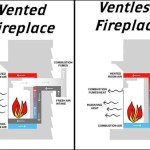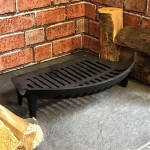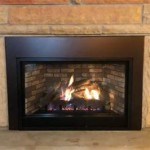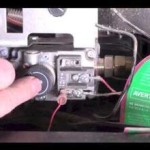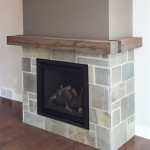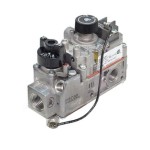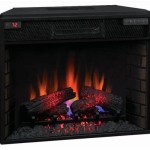Adding A Gas Fireplace To Your Home
A gas fireplace can be a significant addition to a home, offering both aesthetic appeal and a practical heating solution. While the installation process can appear complex, understanding the various factors involved can streamline the planning and execution, ensuring a successful outcome. This article outlines key considerations for adding a gas fireplace, from initial planning to the final setup, providing a comprehensive overview of the process.
Planning and Preparation
The initial stage of adding a gas fireplace involves careful planning. Decisions made at this point significantly impact the overall cost, efficiency, and appearance of the installation. The first consideration is determining the optimal location for the fireplace. Factors such as existing gas lines, venting options, and room layout play crucial roles in this decision. A location near an existing gas line will typically reduce installation costs, as it minimizes the need for extensive piping. Similarly, the availability of a suitable venting pathway, whether through a chimney or an exterior wall, will impact the type of fireplace that can be installed.
Homeowners must choose between direct vent, vent-free, and natural vent gas fireplaces. Direct vent fireplaces draw air from outside and vent exhaust gases outside, making them highly efficient and safe. Vent-free fireplaces, on the other hand, do not require venting but may be restricted by local codes due to concerns about indoor air quality. Natural vent fireplaces utilize existing chimneys, which can be a cost-effective option if a suitable chimney is already present. Each type has its advantages and disadvantages, which must be carefully weighed against individual needs and constraints.
Building codes and permit requirements are essential aspects of the planning phase. Local regulations often dictate specific requirements for gas fireplace installations, ranging from venting specifications to safety clearances. Failing to comply with these regulations can result in costly rework or even legal penalties. Contacting the local building department early in the process is crucial to obtaining the necessary permits and ensuring compliance with all applicable codes. This proactive approach minimizes the risk of delays and ensures that the installation meets all safety standards.
Selecting the right gas fireplace model is equally important. A wide range of models are available, varying in size, style, and heating capacity. The size of the room being heated is a key factor in determining the appropriate heating capacity. An oversized fireplace may overheat the room, while an undersized one may not provide sufficient warmth. Energy efficiency should also be a consideration, as a more efficient fireplace will result in lower energy bills and a reduced environmental impact. Features such as thermostatic controls and programmable timers can further enhance energy efficiency and convenience.
Installation Process
The installation of a gas fireplace involves several distinct stages, each requiring specialized skills and knowledge. While some homeowners may be tempted to undertake the installation themselves, it is generally recommended to hire a qualified and licensed professional. Gas line connections and venting systems require precise execution to ensure safety and prevent leaks. Improper installation can lead to dangerous carbon monoxide buildup, posing a significant health risk.
The first step in the installation process is preparing the site. This may involve removing existing structures, such as a traditional fireplace or mantel, and ensuring that the area is properly leveled and prepared for the new fireplace. If a new gas line is required, a qualified plumber will need to run the line from the main gas supply to the fireplace location. This process involves careful planning to ensure that the gas line is properly sized and routed to meet the fireplace's gas supply requirements.
The venting system is a critical component of the installation. For direct vent fireplaces, this involves installing a vent pipe that extends through an exterior wall or roof. The vent pipe must be properly sealed and insulated to prevent leaks and ensure efficient venting. For natural vent fireplaces, the existing chimney must be inspected to ensure that it is in good condition and properly sized for the new fireplace. A chimney liner may be required to improve venting efficiency and prevent corrosion. Improper venting can lead to carbon monoxide buildup and other safety hazards.
Once the venting system is in place, the fireplace itself can be installed. This involves connecting the gas line to the fireplace and ensuring that all connections are properly tightened and leak-tested. The fireplace is then secured in place and any necessary finishing work, such as installing a mantel or surround, is completed. The installation process typically takes several days to complete, depending on the complexity of the project and the specific requirements of the fireplace model.
Safety and Maintenance
Safety is paramount when dealing with gas appliances. After the installation is complete, it is essential to conduct a thorough inspection to ensure that all components are functioning correctly and that there are no gas leaks. A certified technician should perform a leak test using a gas leak detector to ensure that all connections are airtight. The technician should also verify that the venting system is properly functioning and that there is no backdrafting.
Carbon monoxide detectors are an essential safety device for any home with a gas fireplace. Carbon monoxide is a colorless, odorless gas that can be deadly. Installing carbon monoxide detectors near the fireplace and in sleeping areas can provide early warning of a carbon monoxide leak, allowing occupants to evacuate the premises safely. Regular testing of the carbon monoxide detectors is crucial to ensure that they are functioning properly.
Regular maintenance is essential to ensure the continued safe and efficient operation of the gas fireplace. A qualified technician should inspect the fireplace annually to check for any signs of wear or damage. The technician should also clean the burner, vent, and other components to prevent buildup of soot and debris. Regular maintenance can help to prevent malfunctions and extend the lifespan of the fireplace.
Homeowners should also be aware of potential safety hazards associated with gas fireplaces. Never store flammable materials near the fireplace. Keep children and pets away from the fireplace when it is in operation. Never attempt to repair or modify the fireplace yourself. If you suspect a gas leak or experience any other problems with the fireplace, contact a qualified technician immediately.
Understanding the specific requirements of the chosen fireplace model is also essential. Each model has its own unique operating instructions and maintenance recommendations. Reviewing the manufacturer's instructions and following them carefully can help to ensure safe and efficient operation. Keeping the instructions readily available for reference can also be helpful in troubleshooting any problems that may arise.
By carefully considering the planning and preparation stages, ensuring proper installation by a qualified professional, and adhering to safety and maintenance guidelines, homeowners can enjoy the benefits of a gas fireplace while minimizing the risks. A gas fireplace can be a valuable addition to a home, providing both warmth and aesthetic appeal. The key is to approach the project with careful planning and attention to detail, ensuring that all aspects of the installation are properly executed.

Tips For Adding A Gas Fireplace To Your Home St Louis Hvac
10 Reasons To Add A Gas Fireplace Your Home Heat Glo
10 Reasons To Add A Gas Fireplace Your Home Heat Glo

Installing A Gas Fireplace Insert Into Existing Chimney Just Log Fires

7 Amazing Benefits Of Adding A Gas Fireplace To Your Home

Adding A Fireplace To Existing Home Where For Fireplaces

Does A Fireplace Add Value To House Vertical Chimney Care
How To Install Gas Fireplace Insert Heat Glo

How To Modernize And Update A Gas Fireplace We Love Fire

Is A Gas Fireplace Worth It
Related Posts


